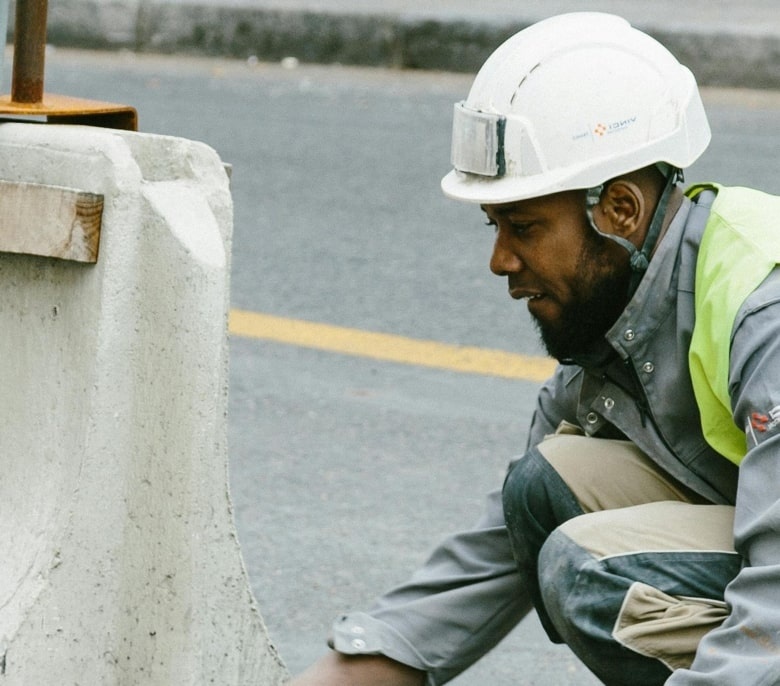Keep Your Head Safe: Head Safety Tips on the Worksite
- Posted on
- By SWSS
- 0

This is a short guide on all the protection equipment you'll need while on the worksite and the practices that will keep you safe and properly protected.
If you work in almost any type of industrial or construction worksite, making sure you have complete head safety is important for protecting your head, eyes, ears, and your respiratory system.
This short guide covers the various ways to keep every part of your head safe from workplace hazards, and what protective equipment you should by to ensure your complete safety.
The Risks Involved
Identify Potential Dangers
Even if your employer provides you with rules or suggestions for protective clothing or equipment, you may find other areas you need protection too.
The typical worksite dangers that threaten head safety include:
- Falling or flying objects
- Exposure to hazardous substances
- Loud noises or vibrations
- Insufficient lighting or visual obstructions
- High-speed particles or splashes of harmful liquids
- Electrical hazards from contact with live wires or electrical equipment
- Unstable surfaces leading to slips or falls
- Extreme temperatures causing heat stress or cold-related injuries
- Biological hazards from exposure to harmful biological agents
Recognizing these risks and wearing the right protective equipment can substantially increase your level of safety at work. When you visit your safety equipment supplier, you just need to have a list of the areas of concern from the list above, and they'll help you find the right equipment to protect you.
Some Essential Safety Practices
To properly reduce any risks of head injuries and workplace hazards, you should apply the following guidelines to significantly increase your personal protection and contribute to a safer work environment.
Some essential workplace safety practices to consider are:
- Always use safety equipment that meets or exceeds industry standards.
- Regularly inspect your gear for wear and damage and replace when necessary.
- Observe signage and barriers around hazardous areas.
- Ensure you strictly follow all safety protocols regardless of the task.
- Attend safety training sessions periodically to keep updated on best practices.
- Create a buddy system to help monitor and manage safety compliance.
- Regularly try to identify and rectify potential hazards.
- Encourage open communication about safety concerns and suggestions among your team members.
The goal is to prevent personal injuries and help foster a culture of safety for the entire worksite and that includes you and your fellow employees. As an employee you still have a major role in maintaining safety standards and to act proactively to protect yourself and your colleagues.
Complete Protective Gear for the Head at Work
Here are some additional forms of protective equipment that will keep your head safe.
Head Protection
Choose the right helmet:
- Select helmets certified for maximum protection against impacts and penetration.
- Ensure the helmet fits snugly without being too tight.
- Regularly inspect and maintain your helmet to ensure it remains effective.
Eye and Face Protection
Eyes are particularly vulnerable on construction sites so key considerations include:
- Use ANSI-approved eye protection to guard against dust, particles, and chemical splashes.
- For high-risk tasks, use goggles with face shields for more protection.
Remember to comply with local safety laws, such as those governing the use of safety glasses in Ontario. These laws are designed to ensure that every worker has the highest level of protection possible.
Ear Safety
Protecting your hearing is important too:
- Use appropriate noise-cancelling or sound reducing devices in noisy environments.
- Do regular hearing tests to monitor any changes in your hearing capacity.
Respiratory Protection
The inhalation of dust, fumes, and other hazardous substances is detrimental to one's health:
- Choose the correct protection based on the specific hazards of your worksite.
- Ensure a there's a strong seal to prevent leakage and to maximize protection.
Wear Neck Protection
- Use collars or neck guards to protect against flying debris or bodily impacts.
- Suitable for industries like logging, where falling branches are a hazard.
- Can be combined with helmet designs for seamless protection.
Integrated Communication Devices
- Equip your helmet with an integrated communication device to maintain clear communication with co-workers in noisy environments.
- Essential for coordinating large teams on busy construction sites.
- Helps in emergency situations to quickly relay information.
Thermal Liners and Cooling Pads
- Implement thermal liners for cold conditions to prevent hypothermia.
- Use cooling pads in helmets to reduce the risk of heatstroke during hot weather.
- Enhances comfort, allowing workers to focus on tasks without temperature distractions.
Visor and Goggle Integration
- Opt for helmets with built-in or attachable visors or goggles for stronger eye protection.
- Protects against UV rays and improves visibility in variable lighting conditions.
- Essential for tasks that involve welding, grinding, or the use of hazardous chemicals.
This level of protection provides additional safety and improves comfort, making it easier for workers to maintain focus on their tasks while staying completely protected.
Before Starting a Job, Commit to Complete Head Safety
Committing to proper head safety on the job is about personal protection and fostering a culture of safety and remember, when it comes to workplace safety, every detail counts.

Comments
Be the first to comment...